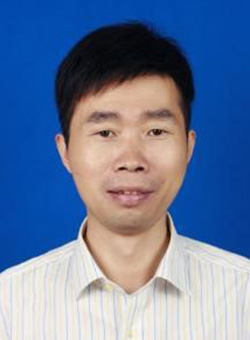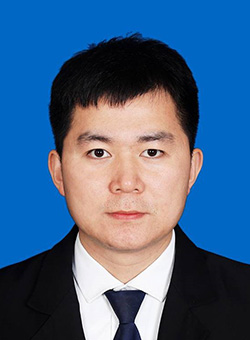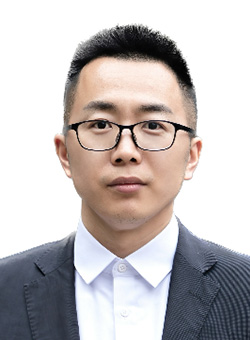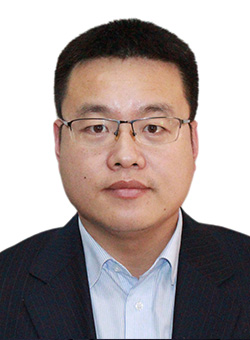The information about the Keynote Speakers of ICEER2024 is as follows, which will be updated regularly.

Dr. Jun Liu, Professor
School of Mechanical and Electrical Engineering, Southwest Petroleum University, Chengdu, China
Biography
Dr. Jun Liu graduated with a doctoral degree in Engineering Mechanics from Chongqing University in 2011. He is currently engaged in teaching and research work in the Department of Mechanical Engineering at Southwest Petroleum University, with a research interest in mechanical analysis and safety evaluation of oil and gas well tubing. He has published over 40 SCI papers, 2 monographs, 18 authorized invention patents, and more than 10 provincial and ministerial level scientific research awards.
Topic
Failure Forms and Safety Evaluation Methods of Downhole Tools in Horizontal Well Development
Abstract
Horizontal well is a development technology that increases oil well production and enhances the economic benefits of oilfield development by expanding the drainage area of the oil reservoir. More and more oil&gas fields are being developed horizontally. The integrity of downhole tools, including tubing and casing, is a prerequisite for achieving horizontal well development. Due to the influence of complex wellbore structures and complex mining conditions such as faults, high temperature and pressure, the mechanical condition of the tubing and tools during drilling, completion, and production is relatively poor, and the failure mechanism is complex. In the speech, we introduce the failure forms, research progress, and urgent problems of pipe columns and downhole tools in horizontal well development.

Dr. Qiming Huang, Associate Professor
College of Safety and Environmental Engineering, Shandong University of Science and Technology, Qingdao, China
Biography
Dr. Qiming Huang is an associate professor at Shandong University of Science and Technology, serving as the scientific editor of the Journal of Coal (English version) and a young editorial board member of Coal Geology and Exploration and Metal Mines. Hosted one National Natural Science Foundation Youth Fund project, one China Postdoctoral Science Foundation general funding project, one Shandong Province Postdoctoral Innovation project, one open project of the Key Laboratory of Industrial Dust Prevention and Occupational Safety and Health Education of the Ministry of Education, and four horizontal projects commissioned by enterprises. In the past 5 years, he has published 20 SCI papers as the first or corresponding author, and has been granted 12 invention patents and 5 utility model patents for the first time; The first published monograph titled "The Mechanism of Influence of Water-based Fracturing Fluid on Coalbed Methane Flow". The research work has won the second prize of Chongqing Science and Technology Progress Award and the first prize of China Occupational Safety and Health Association Science and Technology Award.
Topic
Key Technologies for Dust Reduction at the Source of Deep Coal Seam Water Injection with Strong Permeability and Increased Lubrication
Abstract
Coal, as a fundamental energy and industrial raw material in China, has long provided strong support for economic and social development. However, the coal mining industry is also a high-risk industry with frequent accidents. The 14th Five Year Plan for Mine Safety Production emphasizes that coal mine production should adhere to safe development, source control, and precise prevention and control. Coal seam water injection is an effective technical means to achieve the source control of dust disasters. However, compared to Western coal producing countries such as the United States and Australia, China's coal seam permeability is generally low, which seriously restricts the effectiveness of coal seam hydraulic disaster prevention. Traditional coal seam water injection technology cannot effectively solve such problems, and it is necessary to develop efficient, accurate, and reliable key technologies for coal seam hydraulic disaster prevention. In response to the engineering problems of poor permeability and difficulty in water injection in deep coal seams in China, the principle of "automation and integration" was first integrated into the research and development of dust reduction technology and equipment at the source of low-permeability water injection. Based on a large amount of laboratory testing and on-site industrial test data, a key parameter optimization algorithm for strong permeability and increased lubrication in deep coal seams was established. Based on the physical and chemical properties of low-permeability coal seams, a series of materials for clean and composite efficiency enhancement of coal seam water injection were developed from two aspects: crack structure transformation and interface wetting optimization. By combining hydraulic slotting with high-pressure water injection technology, a key technology of hydraulic strong infiltration and lubrication integration has been proposed, forming a systematic analysis and judgment method for key technical parameters. A coal seam hydraulic strong infiltration and lubrication integration technology equipment has been developed and successfully applied in coal seam water injection dust reduction projects in typical disaster mining areas in China.

Dr. Shunli Wang, Professor
School of Electric Power, Inner Mongolia University of Technology, Hohhot, China; Smart Energy Storage Institute, China
Biography
Dr. Shunli Wang is a Professor, Doctoral Supervisor, Executive Vice President of Smart Energy Storage Institute, Academic Dean of Electric Power College at Inner Mongolia University of Technology, Academician of Russian Academy of Natural Sciences, IET Fellow, Provincial Senior Overseas Talent, Academic Leader of the National Electrical Safety and Quality Testing Center, Tianfu Qingcheng Provincial Scientific and Technological Talent, Academic and Technical Leader of China Science and Technology City, Top 2% Worldwide Scientist. His research interests include modeling, state estimation, and safety management for energy storage systems. 56 projects have been undertaken, supported by National Natural Science Foundation of China and the Provincial Science and Technology Department et al. 258 research papers have been published with RIS value of 11617 and h-index value of 29. 52 intellectual property rights have been approved. 9 monographs have been published by famous publishers of Elsevier and IET and so on. The total print number of New Energy Technology and Power Management reaches 6300 copies that are reprinted 4 times. He has guided students on 29 science and technology innovation projects with 6 excellent completion and 34 awards in science and technology competitions. He has won 13 scientific and technological awards, including the Gold Award at the 48th Geneva Invention Exhibition.
Topic
Core State Factor Monitoring of Smart Energy Storage Systems
Abstract
As an important component of the smart grid energy storage system, high-precision state of health estimation of lithium-ion batteries is crucial for ensuring the power quality and supply capacity of the smart grid. To achieve this goal, an improved integrated algorithm based on multiple layer kernel extreme learning machine and genetic particle swarm optimization algorithm is proposed to estimate the SOH of Lithium-ion batteries. Kernel function parameters are used to simulate the update of particle position and speed, and genetic algorithm is introduced to select, cross and mutate particles. The improved particle swarm optimization is used to optimize the extreme value to improve prediction accuracy and model stability. The cycle data of different specifications of LIB units are processed to construct the traditional high-dimensional health feature dataset and the low-dimensional fusion feature dataset, and each version of ML-ELM network is trained and tested separately. The numerical analysis of the prediction results shows that the root mean square error of the comprehensive algorithm for SOH estimation is controlled within 0.66%. The results of the multi-indicator comparison show that the proposed algorithm can track the true value stably and accurately with satisfactory high accuracy and strong robustness, providing guarantees for the efficient and stable operation of the smart grid.

Dr. Xueyong Tian, Professor
School of Environmental and Chemical Engineering, Shenyang University of Technology, Shenyang, China
Biography
Dr. Xueyong Tian was born in Linyi, Shandong Province, China in 1979. He received the Ph.D. degree in 2011. He is currently a professor and the director of the Institute of Intelligent Environmental Protection Technology at Shenyang University of Technology, member of the Environmental Perception and Protection Automation Professional Committee of the Chinese Society of Automation. He has led sub projects of the National Key R&D Program, key R&D projects in Liaoning Province, and key scientific and technological research projects in Liaoning Province, and has led more than ten achievement transformation projects. He has participated in more than ten major projects, including the National 973 Project, the National 863 Project, and the Military Key Equipment Reform and Promotion Project. He has published more than 30 papers and obtained more than 20 patents and software copyrights.
Topic
Modeling and Optimization of Wastewater Treatment Process Based on Artificial Intelligence Technology
Abstract
With the development of the economy and the deepening and strict requirements of the dual carbon goals, new technological challenges have been proposed for sewage treatment processes and processes. This requires the combination of new technologies and methods in sewage treatment processes to expand both theory and application. The rapid development of artificial intelligence technology has brought new growth momentum to the field of water treatment. The sewage treatment process involves complex chemical, physical, and biochemical processes, making it difficult to establish accurate mathematical models. The traditional ASM model series applied to activated sludge processes is an approximate model under many constraints, and its scope of use is limited. The widely used membrane technology lacks relevant model-based analysis. Many key parameters and indicators in the sewage treatment process lack real-time and accurate measurement techniques, resulting in delayed measurement data and affecting precise process control. Artificial intelligence technology can utilize historical, real-time data, and other algorithms such as machine learning, neural networks, and deep learning to achieve process modeling, soft measurement of key parameters and indicators, process control, and optimization of many sewage treatment processes, thereby helping to solve new challenges encountered in sewage treatment.

conference123 is an international academic communication platform, that facilitates high-level symposiums and fostering innovation. It serves as a platform for academic conferences, bringing together experts and scholars worldwide to exchange research findings.
Participation Guidelines
Contact Us
Email: contact@conference123.net
Cell Phone: 0086-18616502321
0086-18621626037
|
Address: |
11th Floor, Block B, Pinzun International Center, No. 567, Langao Road, Putuo District, Shanghai |

沪公网安备 31010702005022号